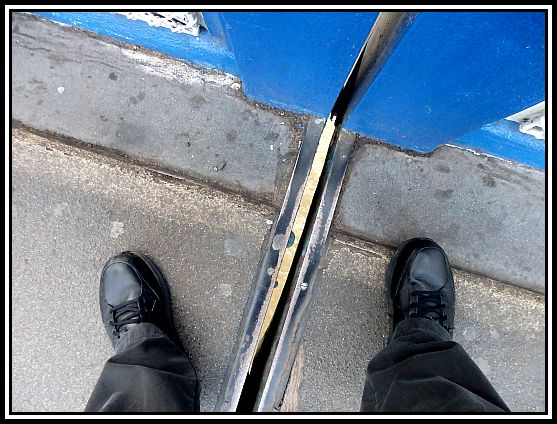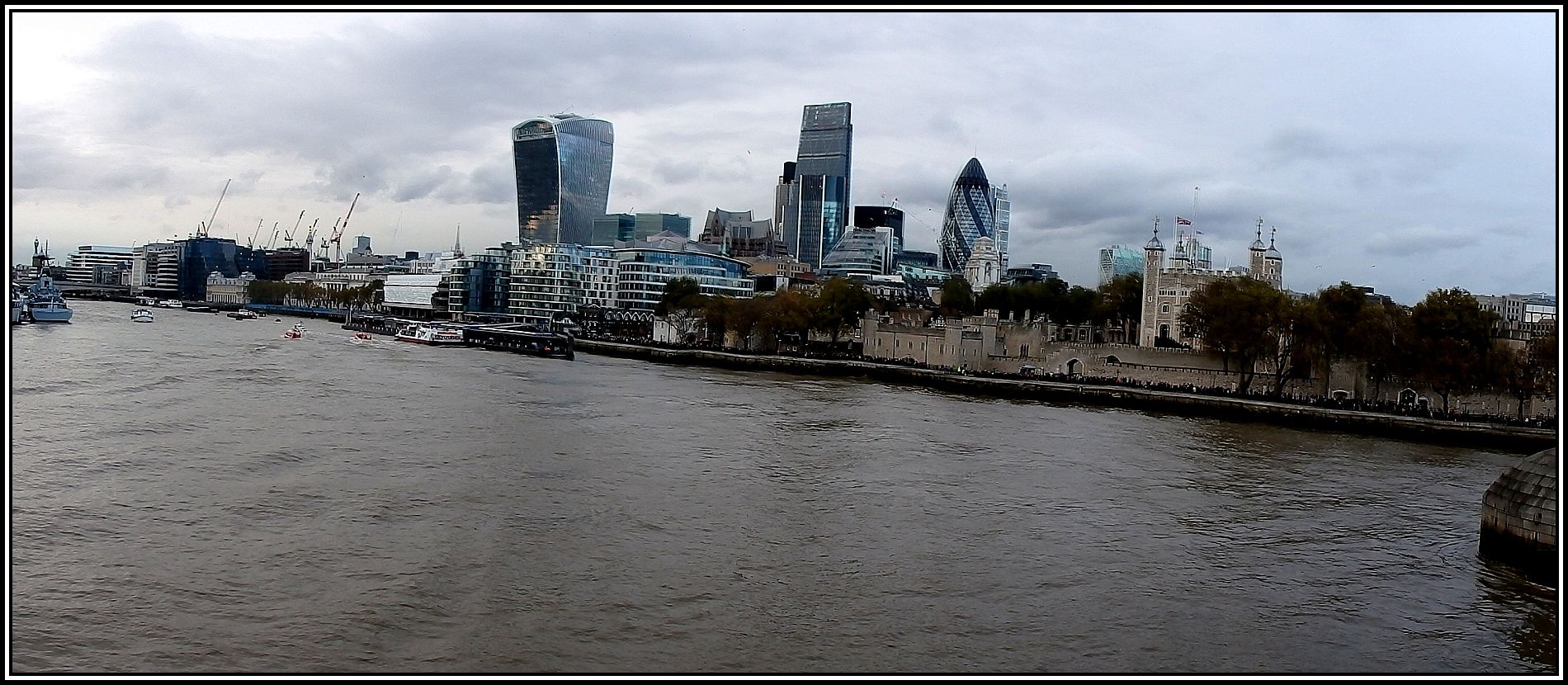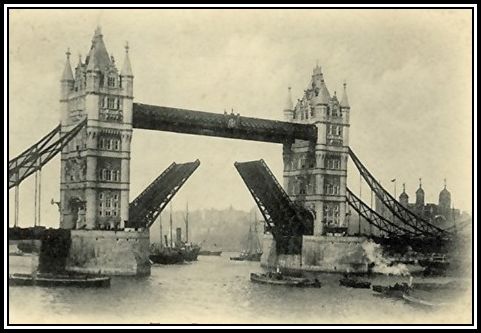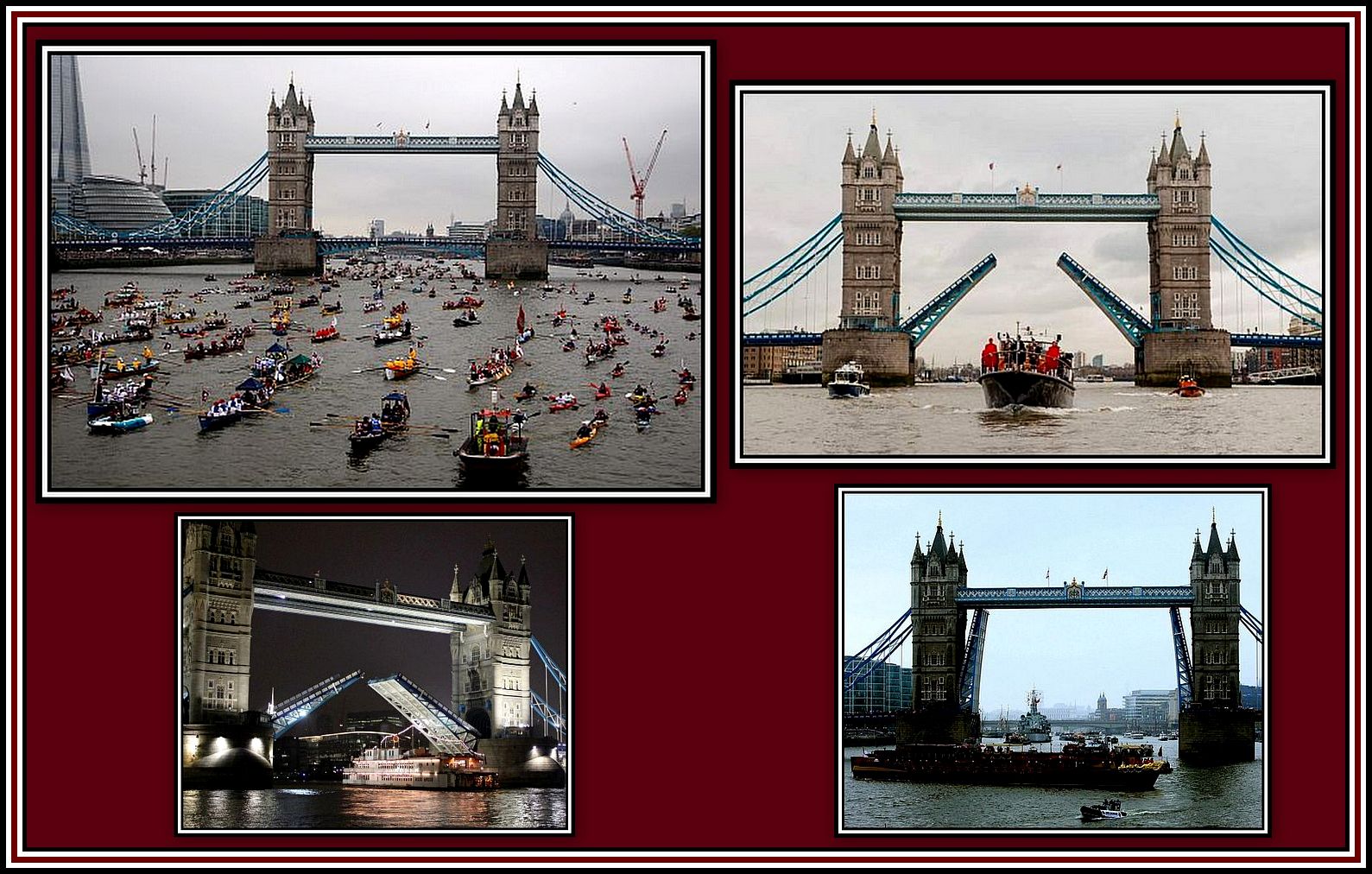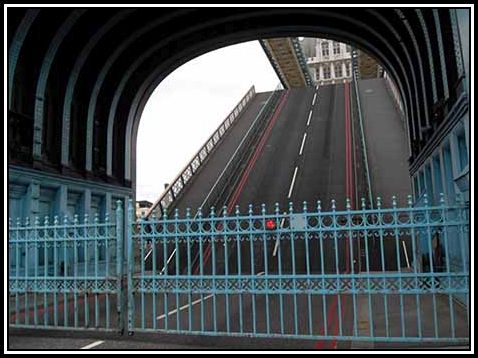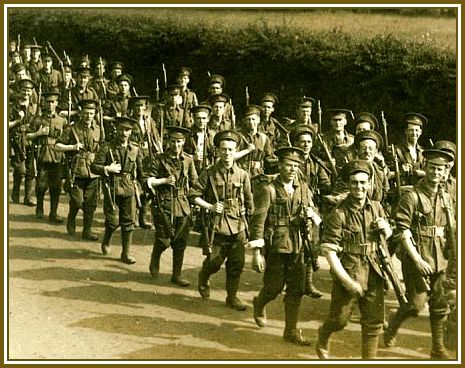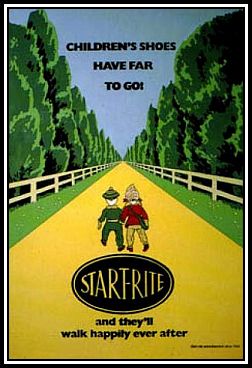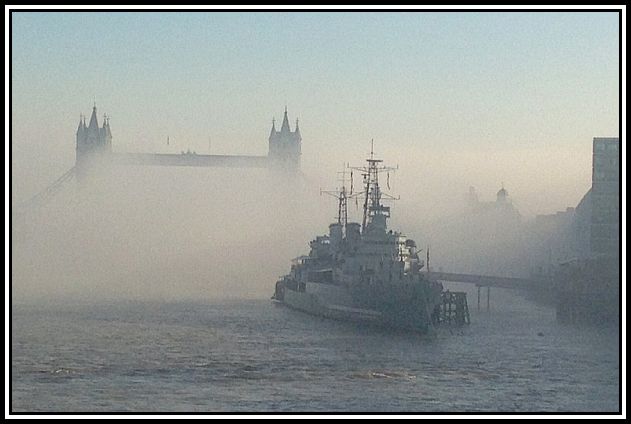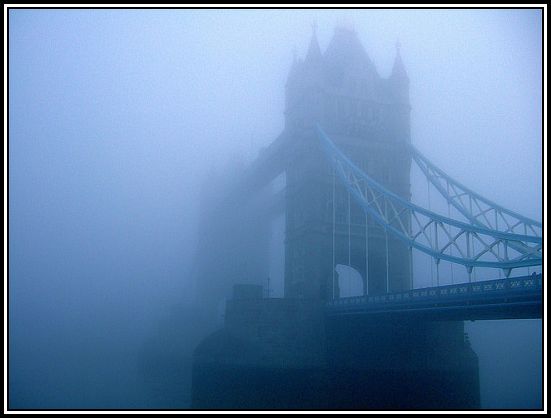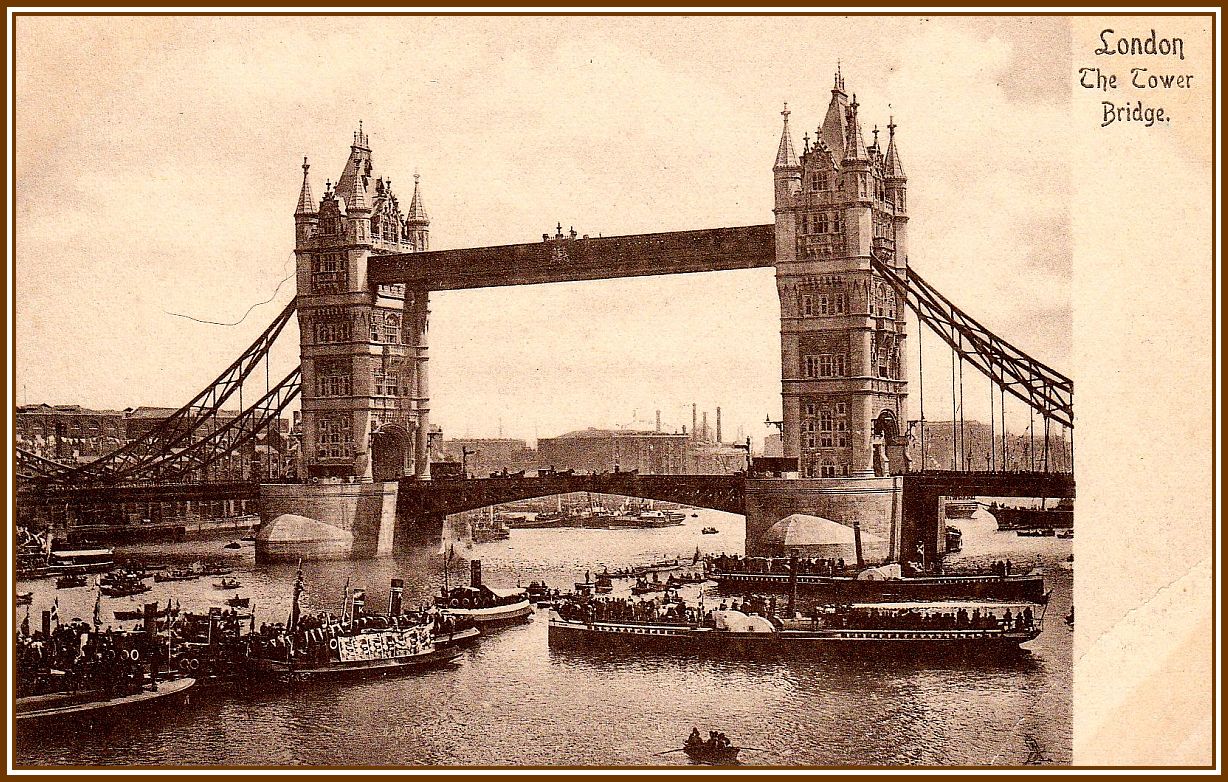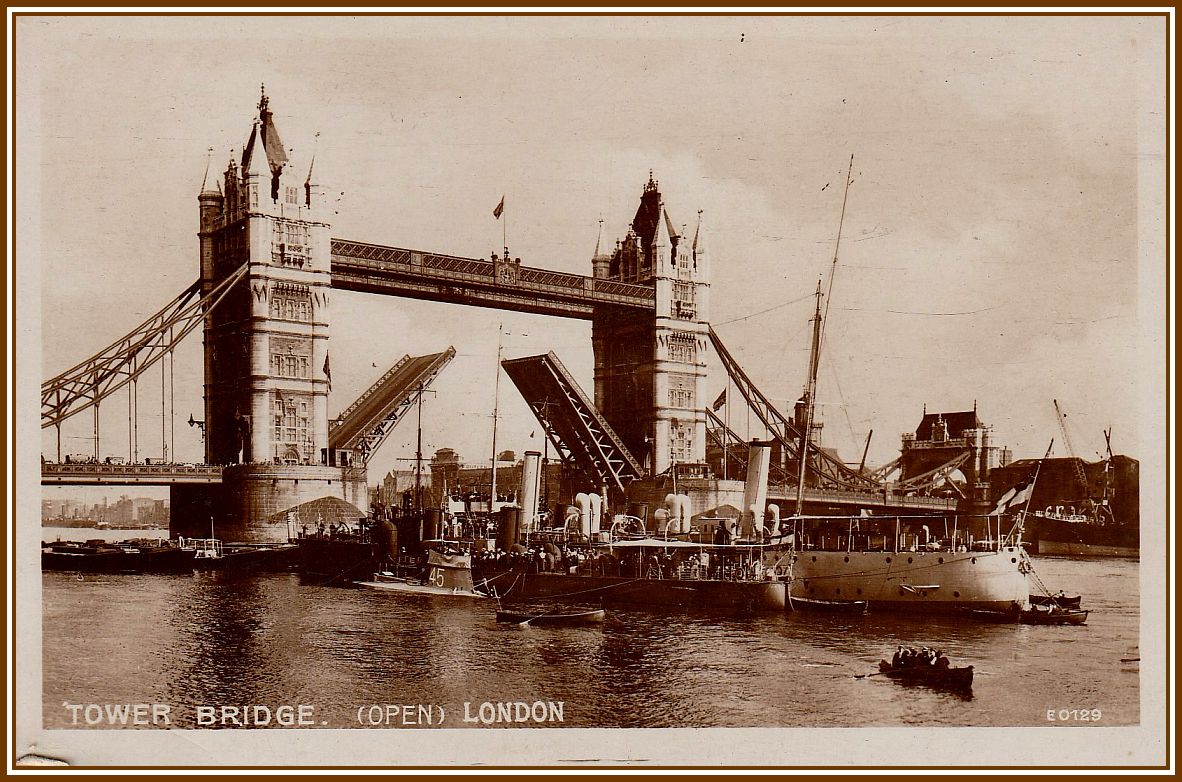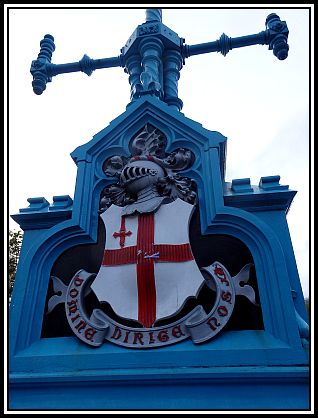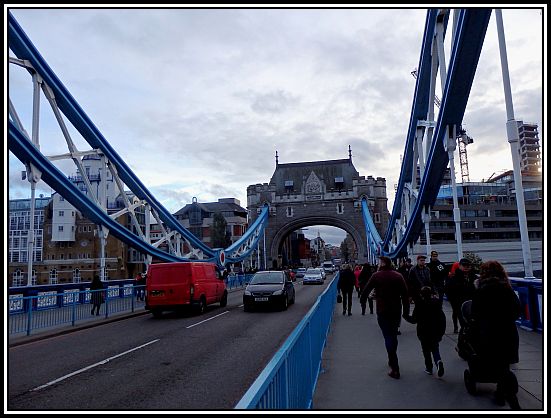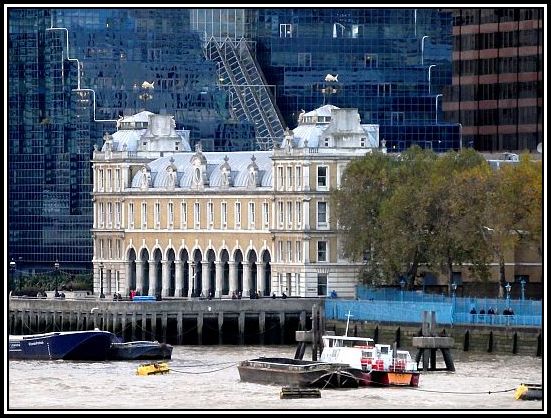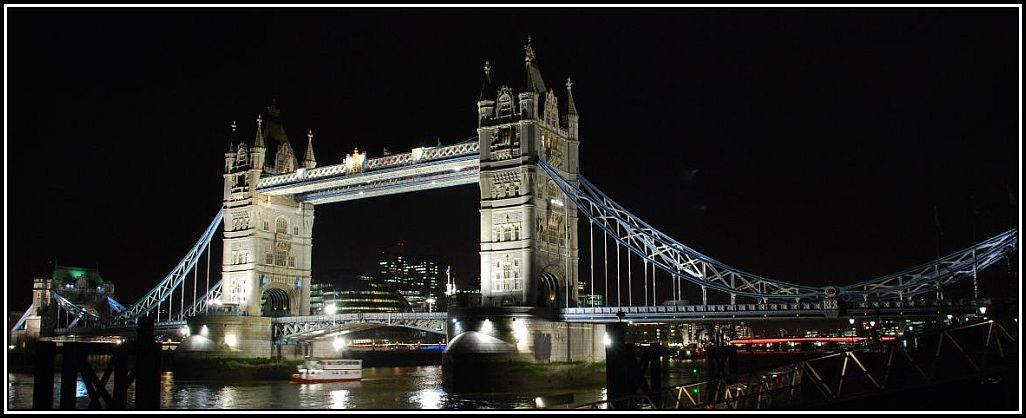MEMORIES
OF
THE TOWER OF LONDON
&
TOWER BRIDGE
-oOo-
PAGE TWO: A WALK ACROSS TOWER BRIDGE
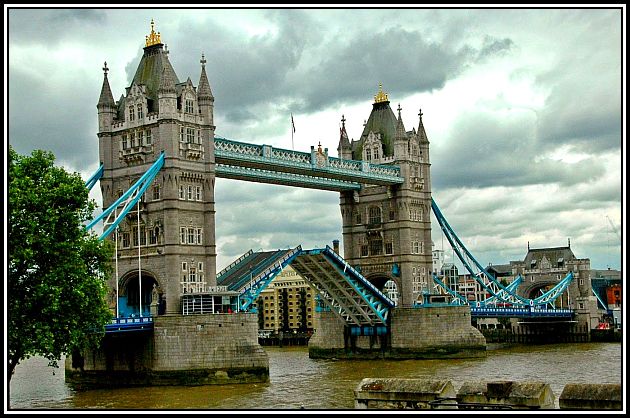 Tower Bridge, built between 1886 and 1894, is a combined Suspension and Bascule bridge and is 213 feet in height
Tower Bridge, built between 1886 and 1894, is a combined Suspension and Bascule bridge and is 213 feet in height
-oOo-
As I was saying ………
My father really enjoyed walking across Tower Bridge and standing astride the Bascules (i.e. drawbridge) of the Bridge. As a small child, I found the juddering of the Bascules to be a trifle frightening, but, with time, I learned to enjoy the experience. My mother never took part in this fun and did not like the fact that my father encouraged me to join him in this stupidity!
Straddling The Bascules
-oOo-
After visiting The Tower and seeing the Poppies at The Tower, I decided that it was time to walk across Tower Bridge once more. I could not help but notice how much the area had changed. Even during my visit in the mid-1970s, there were a few Docks and wharves present and still in operation to the east of the Bridge. But today, I noticed that all of the old buildings were either gone or else used for other purposes. The result was that the area was no longer the Docklands that I knew as a child.
Despite the skyline on either side of the River Thames having greatly changed since my last visit to The Tower, one thing that had not was The Bridge! Although Tower Bridge might now have its upper suspension area reopened to the public and has a brighter appearance thanks to the Facelift (2008-2012), The Bridge is still The Bridge and, as such, remains iconic – a symbol of The City and The Country – a magnificent architectural wonder of the modern world, but then, I am prejudice since I like it!
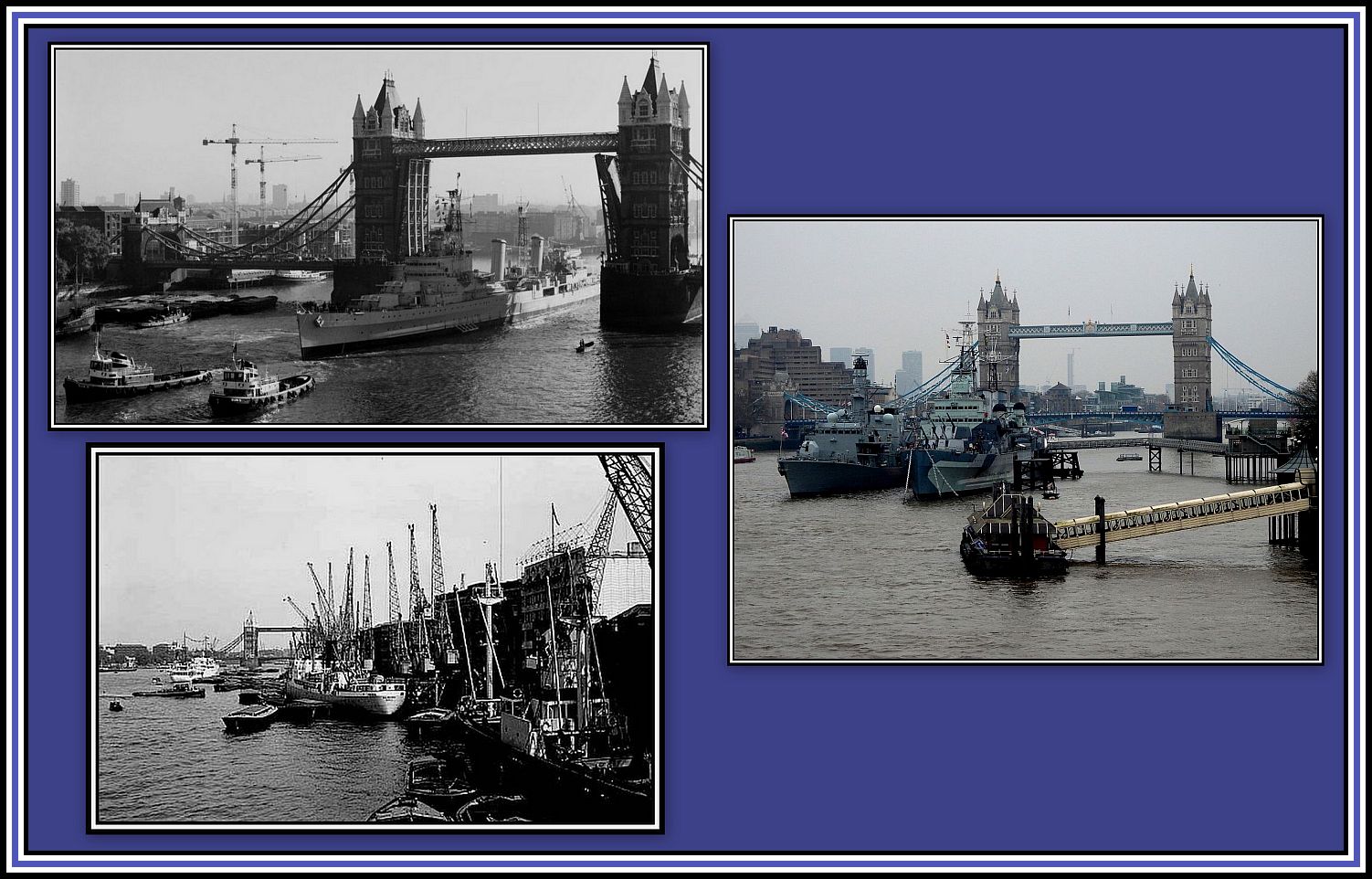 Top Left: HMS Belfast arriving in The Upper Pool of London; Bottom Left: Erstwhile Wharves on the south side of The Upper Pool of London; & Right: HMS Belfast today
Top Left: HMS Belfast arriving in The Upper Pool of London; Bottom Left: Erstwhile Wharves on the south side of The Upper Pool of London; & Right: HMS Belfast today
-oOo-
In 1877, a Special Bridge or Subway Committee was formed to investigate the possibilities available to cross the River downstream of London Bridge. However, it was not until 1884 that a design was approved, which was submitted by the City Architect, Sir Horace Jones (1819-1887), who, in addition, was one of the judges. Sir John Wolfe Barry (1836-1918), the engineer of the project, was responsible for the idea of a Bascule Bridge with two Bridge Towers built on piers.
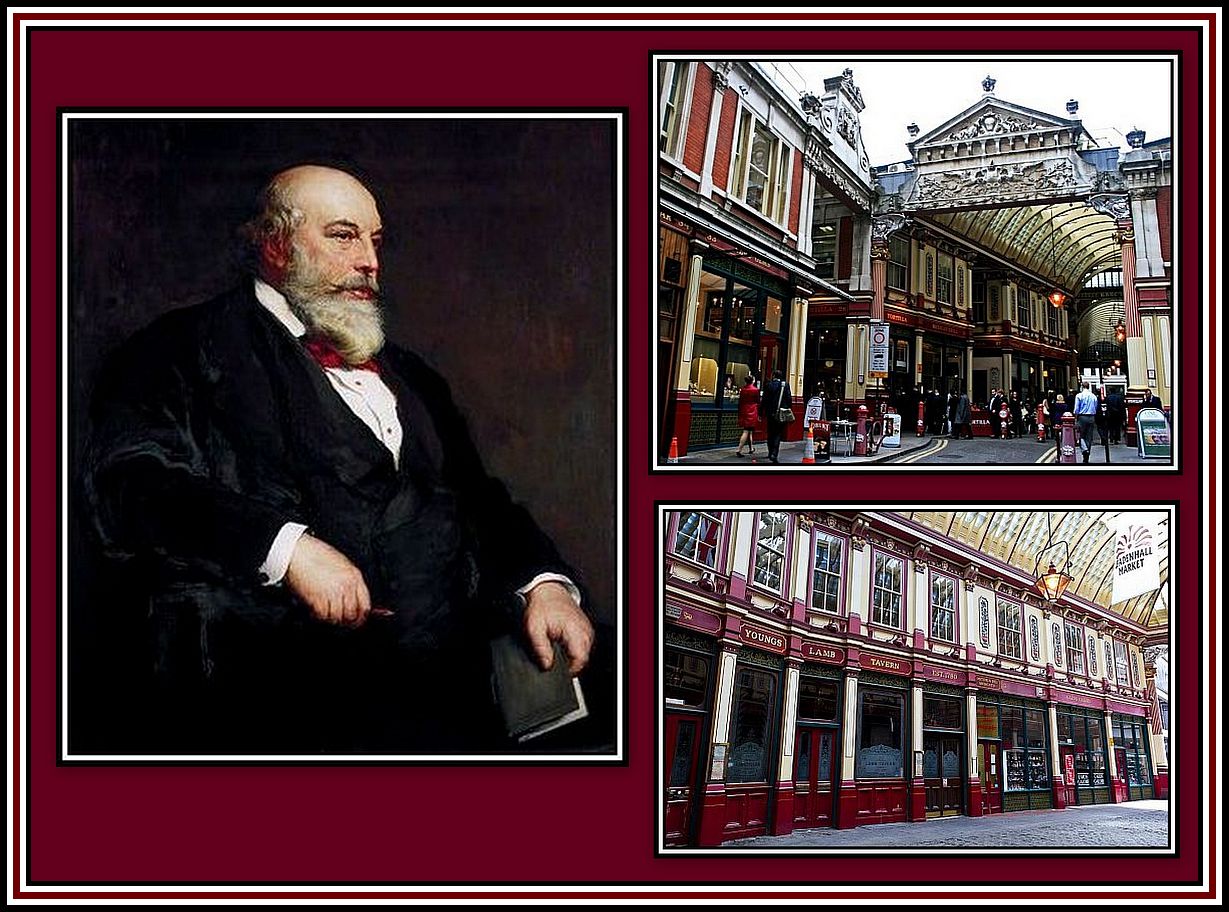 Left: Sir Horace Jones; Upper Right: Leadenhall Market was also designed by Sir Horace (as were both Billingsgate Fish and Smithfield Meat & Poultry Markets); Lower Right: Public House in the market; I was friends with the son of the publican and used to visit him here often as a child
Left: Sir Horace Jones; Upper Right: Leadenhall Market was also designed by Sir Horace (as were both Billingsgate Fish and Smithfield Meat & Poultry Markets); Lower Right: Public House in the market; I was friends with the son of the publican and used to visit him here often as a child
With the death of Sir Horace Jones in 1887, George D. Stevenson was given the position of continuing the work. Sir Horace had planned a brick façade for The Bridge, but Mr. Stevenson changed this in favour of an ornate Victorian Gothic style, which was intended to harmonise it with The Tower.
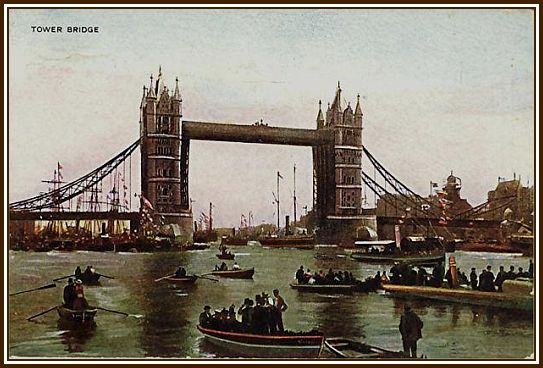 A Postcard of The Opening Day present on the website, Postcards of Past
A Postcard of The Opening Day present on the website, Postcards of Past
-oOo-
The Bridge was officially opened on 30th June, 1894 by The Prince and Princess of Wales (King Edward VII and Alexandra of Denmark).
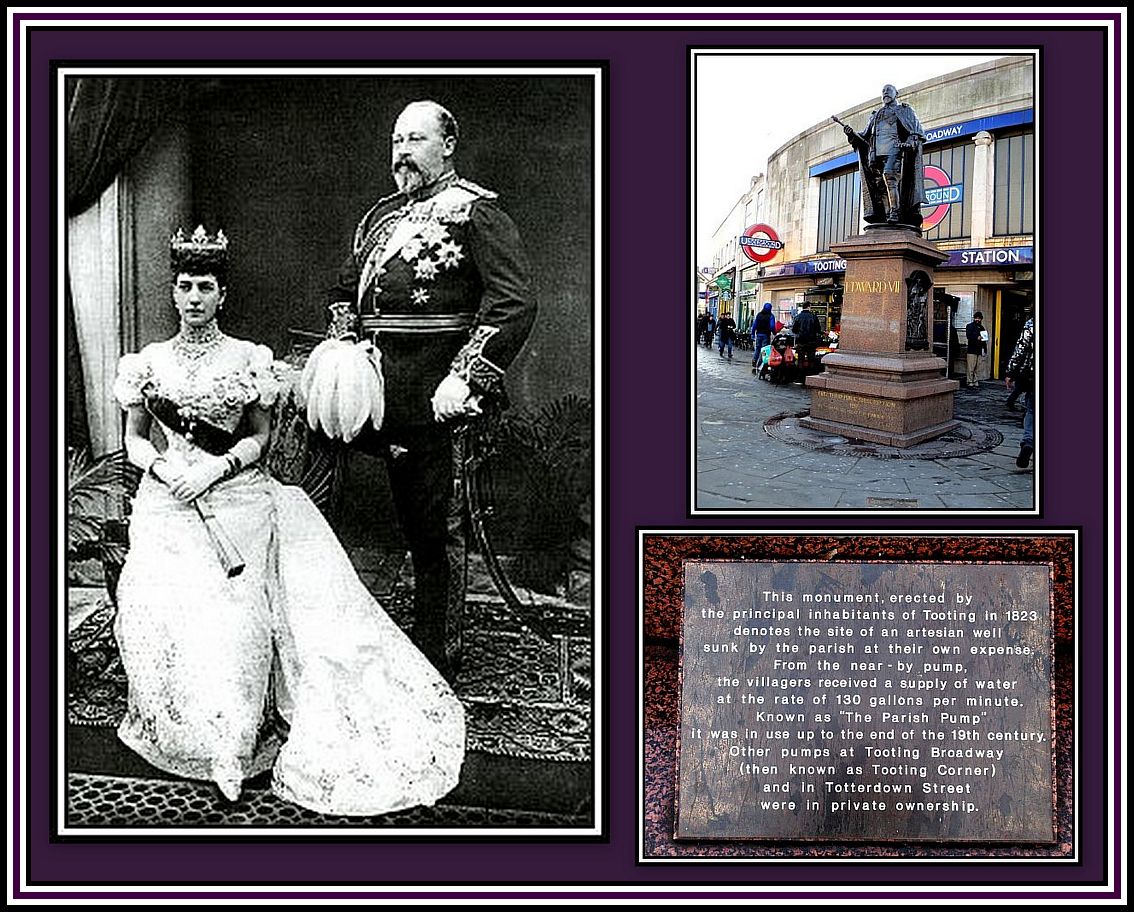 Left: Edward VII & Queen Alexandra; Top Right: Statue of Edward VII seemingly forgotten today standing before Tooting Broadway Underground Station; Bottom Right: Statue Plaque
Left: Edward VII & Queen Alexandra; Top Right: Statue of Edward VII seemingly forgotten today standing before Tooting Broadway Underground Station; Bottom Right: Statue Plaque
-oOo-
The Bridge, which cost £1,184,000 (equivalent to £120 million in 2015), is 244 metres (801 feet) in length; 65 metres (213 feet) in height; 82.3 metres (270 feet) at its longest span; and with a Clearance beneath the Bascules when closed of 8.6 metres (28 feet) and 42.5 metres (139 feet) when open.
The original raising mechanism of Tower Bridge was powered by pressurised water stored in several Hydraulic Accumulators. In 1974, this mechanism was largely replaced by a new Electro-Hydraulic Drive System (i.e. Transmission). Of the few remaining original components of the mechanism, the Pinions (i.e. a round gear) that engage with the racks fitted to the Bascules are still in place.
Despite the reduction of river traffic since the closure of The Docks, the Bascules of The Bridge are raised ~ 1,000 times a year and is free of charge to sea going vessels and continues to take priority over road traffic. Today, 24 hours’ notice is required to book an opening of The Bridge.
It is interesting to note that the Bascules are only raised to the point where vessels are able to pass without endangering either The Bridge or the vessel. However, should a vessel pass with the Queen on board, the Bascules are always fully raised (i.e. 86 degrees).
-oOo-
A View of Tower Bridge with its Bascules raised
(Photograph attributed to London is cool)
A somewhat amusing tale, except to the Security Staff of the President of the U.S., occurred in 1997. Apparently, the Motorcade of President Clinton became split in two when it arrived at The Bridge at a time when the Bascules were about to open. And open the Bascules did and the Motorcade was divided much to the dismay of the Security Staff! Seemingly The Bridge’s staff attempted to telephone the U.S. Embassy to inform them of the opening, but they failed to pick it up and so warn the Motorcade!
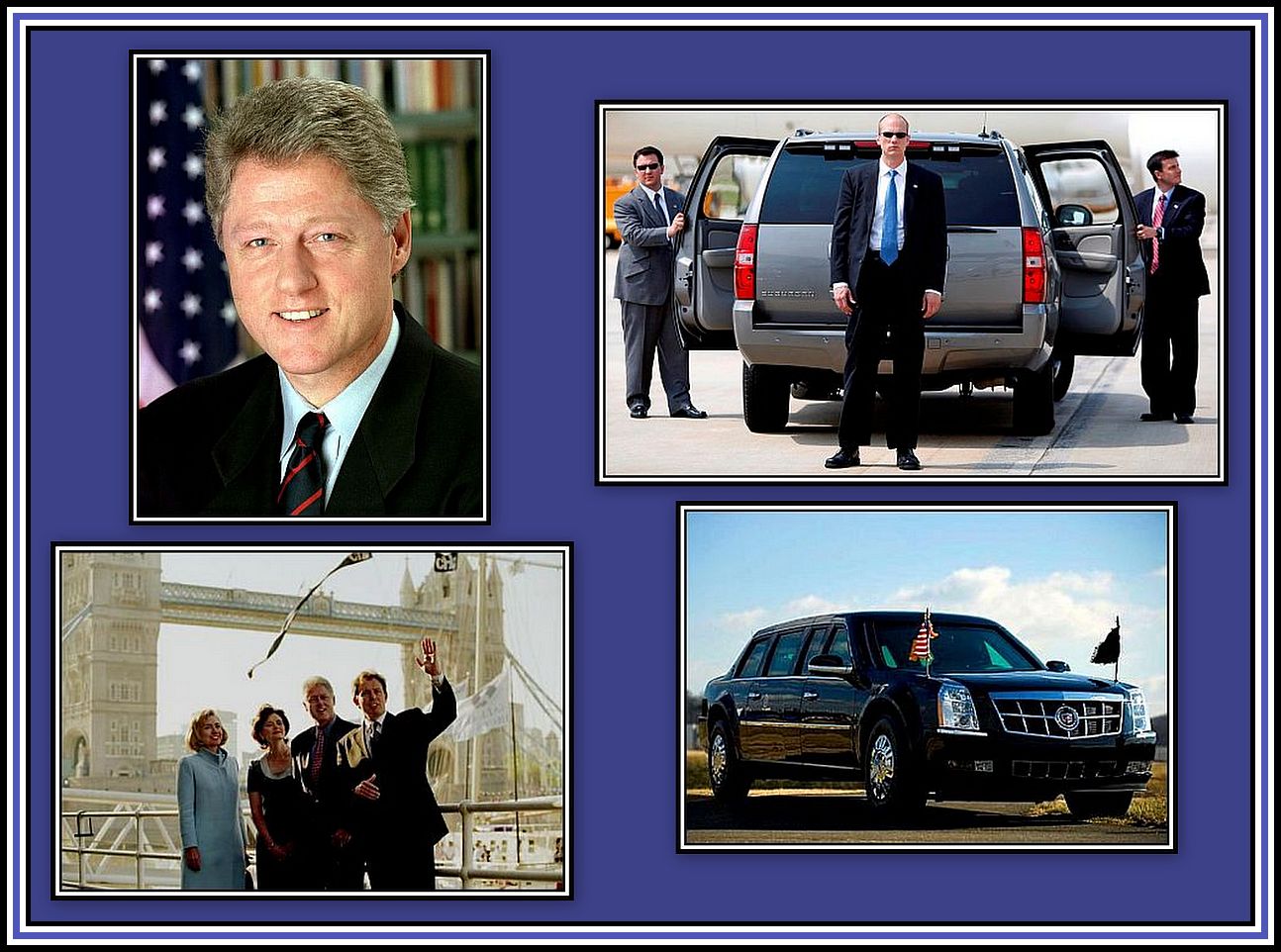 President and Mrs. Clinton visit The Tower and Luncheon with Prime Minister Blair and His Wife
President and Mrs. Clinton visit The Tower and Luncheon with Prime Minister Blair and His Wife
-oOo-
Prior to the opening of Tower Bridge, the Tower Subway, which was found approximately 400 metres to the west, was the shortest way to cross the River from Tower Hill to Southwark. The Subway opened in 1870 and was among the world’s earliest underground (i.e. tube) railway systems. However, it was closed after three months of operation and re-opened as a pedestrian foot tunnel. With the opening of Tower Bridge to traffic, the majority of pedestrians began to take The Bridge since there was no charge via this route. Having lost most of its income, The Subway closed in 1898 and sold to the London Hydraulic Power Company.
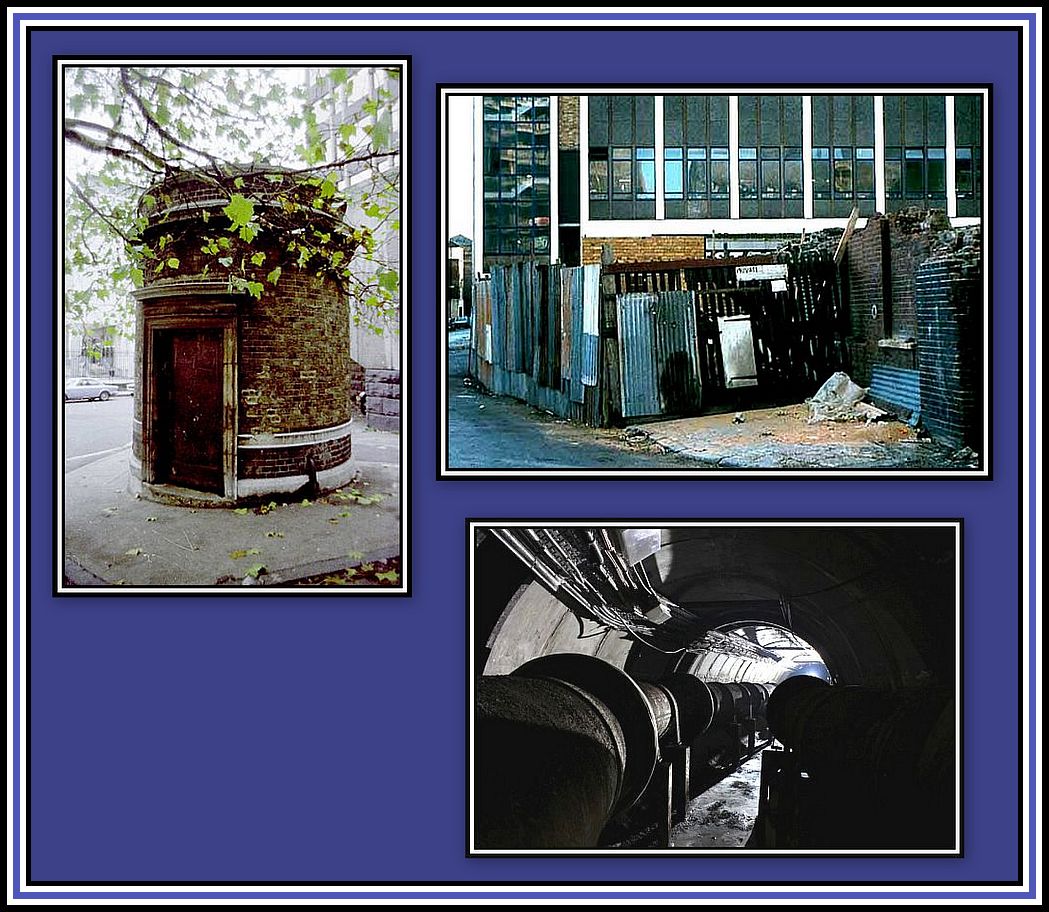 Entrances to the former Tower Subway
Entrances to the former Tower Subway
Left: Northern Entrance, Tower Hill (Photograph attributed to Abandoned Stations); Top Right: Remains of the Southern Entrance, Tooley Street; the entrance was demolished in the 1990s (Photograph attributed to Mr. Roger Morgan & Subterranea Britannica); Bottom Right: Pipes installed by the London Hydraulic Power Company (Photograph attributed to Bonuslevel)
-oOo-
As a child, I disliked walking between Tower Hill and Tower Bridge! Although I always liked The Bridge, at that time, the distance seemed to be long and endless ……. like a Route March! This resulted in my growing up loathing to walk it!
When I went to The Tower, I wasn’t planning on walking to The Bridge, but once I saw it in the distance, I was reminded of my father’s joy when he visited it and walked across it, I thought it might be a nice gesture to his memory to walk that long and endless path again ………. for Auld Lang Syne …… you might say!
To my surprise, once I started walking towards The Bridge, I soon realised that the distance between Tower Hill and Tower Bridge was neither a great distance nor endless, as I had mistakenly thought , but was more a short stroll, and a pleasant one at that!
For those readers that have walked this path, I am sure that you knew this already! My only defense for thinking to the contrary is that being a child, my steps were small, so the distance might have appeared long to me. However, in contrast to this defense, I have to say that, as a child, I was used to walking long distances with my parents and was able to walk from our home at Mile End Gate to The Tower (1.3 miles) and then back again without complaints (i.e. 2.6 miles)!
For the record, the distance between Tower Hill and the south entrance of The Bridge is a mere half a mile! Of course it is possible that the thought of this extra mile added to the homeward leg of 1.3 miles proved to be daunting to a young child! I am sure that I was carried for at least part of the way home.
-oOo-
(Photograph attributed to Mr. Piers Calvart; published in the Daily Mail, 11th December, 2013)
To me, Tower Bridge is both a remarkable and beautiful structure. I think its presence turns any view of the area into a spectacle! By far the best description of Tower Bridge that I have read was composed in 1893 by Sir John Wolfe Barry (1836-1918) and was presented as a lecture the next year. Excerpts of the lecture may be read by readers with an interest at The Victorian Web.
-oOo-
Since I can not write a better description of Tower Bridge than that given on The Victorian Web, I will limit my description of this magnificent structure to the following photographs, which were taken during my walk.
(Photograph attributed to Mr. Michael Wailes)
-oOo-
TWO POSTCARDS OF TOWER BRIDGE SENT BY DAVE HILL
I am fortunate enough to have received two postcards from the collection of Mr. Dave Hill and which are displayed here. Both were produced in the early 1900s.
This postcard shows a view of Tower Bridge looking eastwards. Unfortunately, Mr. Hill is unsure exactly which event the postcard displays. However it must have involved a gathering of various sized crafts since the postcards shows several small steamships and tugs filled with passengers and moored close to The Bridge together with an assortment of rowboats. Horse drawn cabs may also be seen on The Bridge.
-oOo-
Mr. Hill’s second postcard shows Tower Bridge with the Bascules raised and also shows a view looking eastward. I am assured that several submarines are shown in the postcard together with a number of barges and rowboats.
Mr Hill says that the scene shown in the second postcard is part of a Naval Pageant held in July 1909 and was filmed as a short silent documentary film by John Y. Brown. The Pageant was presented to show to the public where some of their taxes was being spent. As a result, various craft, including submarines (during High Tide) and torpedo boats, were put on display for viewing between Westminster and Tower Bridge while the larger warships were on view at Southend. In addition, a review of The Fleet took place off Spithead.
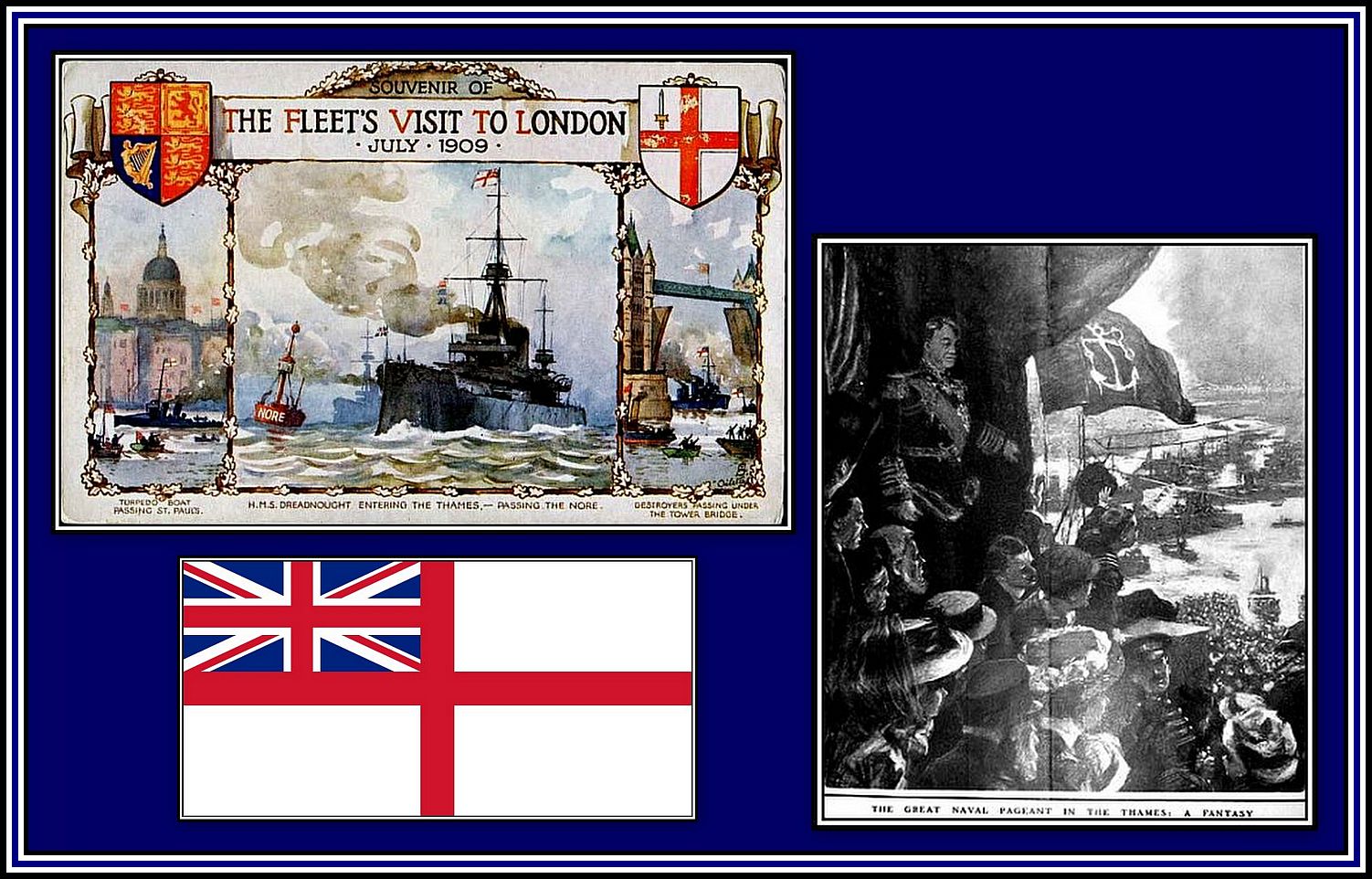 A Souvenir Print of the Naval Pageant of 1909 (Left), a Print showing the Battle Ships on display during the Pageant (Right) and the White Ensign Flag (once known as St. George’s Ensign) of the Royal Navy
A Souvenir Print of the Naval Pageant of 1909 (Left), a Print showing the Battle Ships on display during the Pageant (Right) and the White Ensign Flag (once known as St. George’s Ensign) of the Royal Navy
-oOo-
I would like to thank Mr. Hill for sending these postcards and for allowing them to be displayed here. I find his postcards to be a delight and show the City off when life was perhaps less hurried and also perhaps a little more joyful.
——oooOOOooo——
My walk began on the right side of the northern approach to The Bridge and continued across to the southern approach.
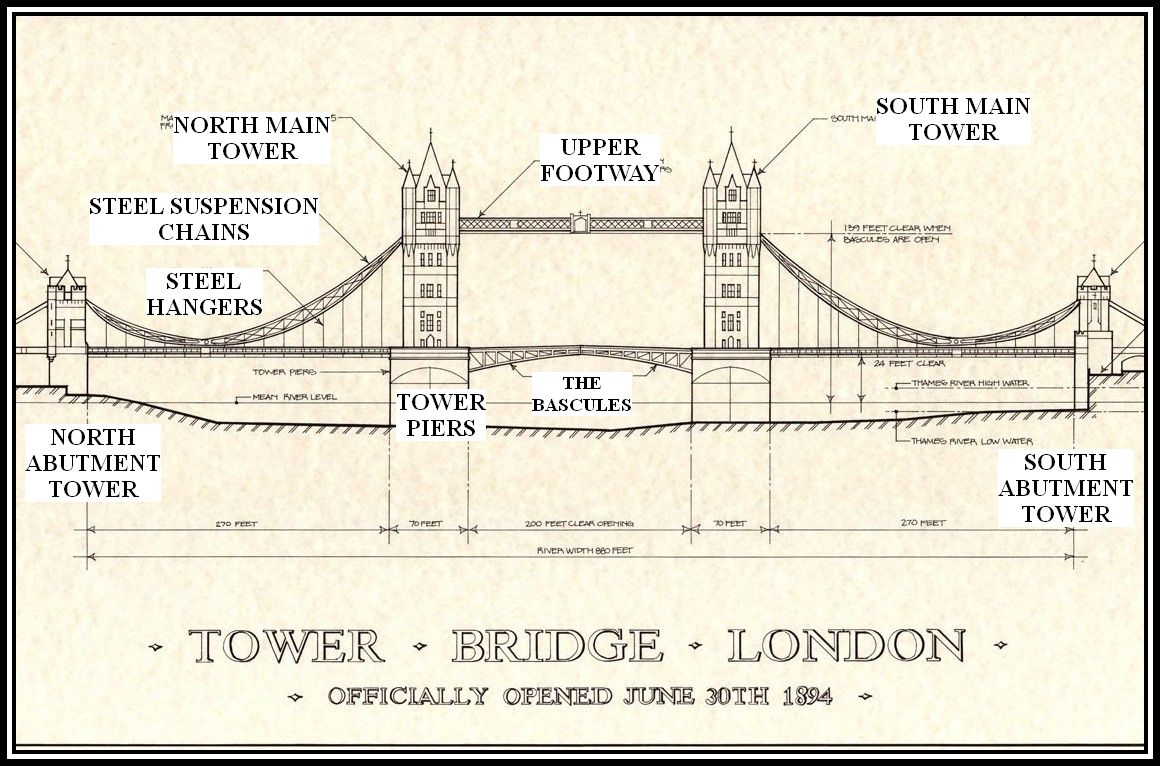 Key to descriptive terms used to describe structures in the photographs
Key to descriptive terms used to describe structures in the photographs
(The basic plan of this design is attributed to The Age Shop)
-oOo-
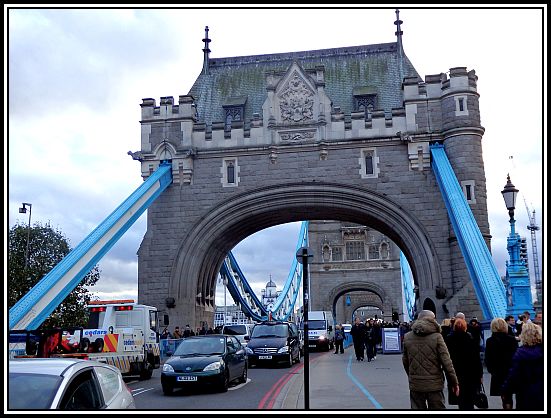 View seen walking towards the North Abutment Tower – note the huge blue and white steel Anchor Girders attached to the Tower
View seen walking towards the North Abutment Tower – note the huge blue and white steel Anchor Girders attached to the Tower
-oOo-
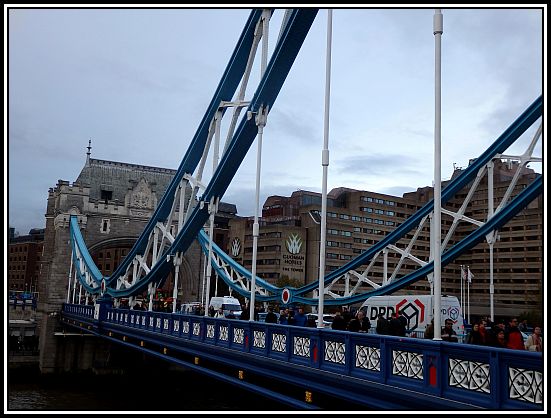 View from the North Main Tower walkway looking back towards the North Abutment Tower; note the Steel Suspension Chains joining the two Towers and the Steel Hangers between the Chains and the Parapet
View from the North Main Tower walkway looking back towards the North Abutment Tower; note the Steel Suspension Chains joining the two Towers and the Steel Hangers between the Chains and the Parapet
-oOo-
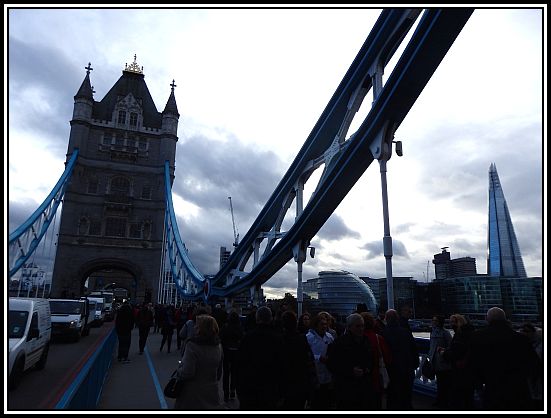 View after passing through the Northern Abutment Tower looking towards the North Main Tower; again, note the Steel Suspension Chains joining the two Towers and the Steel Hangers between the Chains and the Parapet; the new London City Hall and The Shard are seen on the South (Southwark) Bank
View after passing through the Northern Abutment Tower looking towards the North Main Tower; again, note the Steel Suspension Chains joining the two Towers and the Steel Hangers between the Chains and the Parapet; the new London City Hall and The Shard are seen on the South (Southwark) Bank
-oOo-
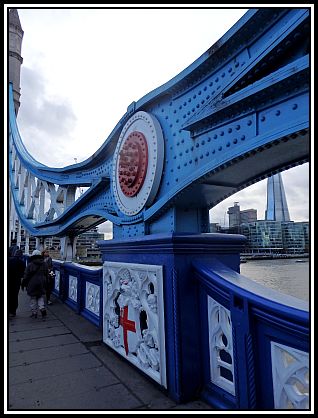 Close-up view of the anchoring point of one of the Steel Suspension Chains; note the Coat of Arms of the City of London beneath the anchor point
Close-up view of the anchoring point of one of the Steel Suspension Chains; note the Coat of Arms of the City of London beneath the anchor point
-oOo-
The Coat of Arms of the City of London seen on Tower Bridge
-oOo-
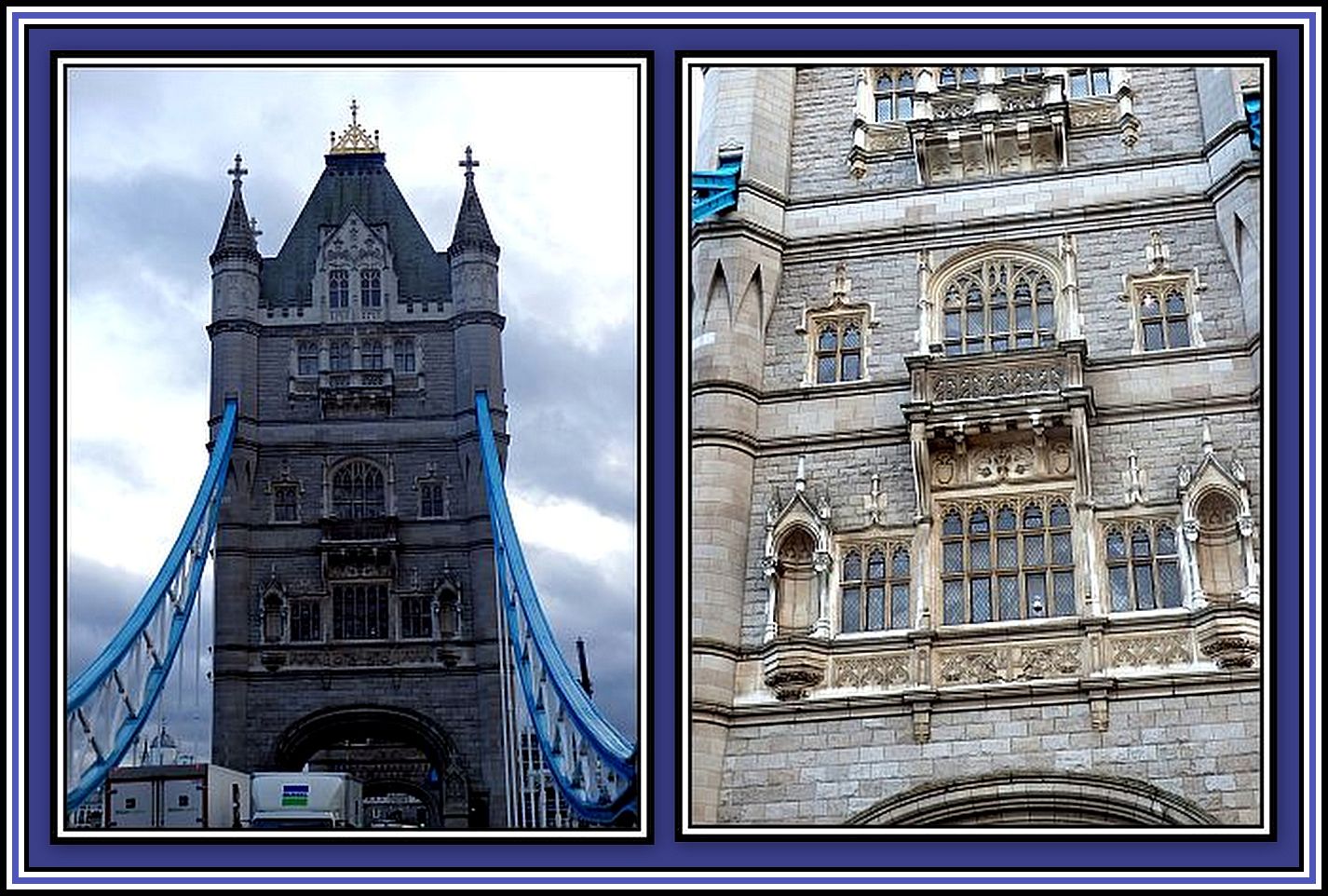 Views of the North Face of the North Tower and details
Views of the North Face of the North Tower and details
-oOo-
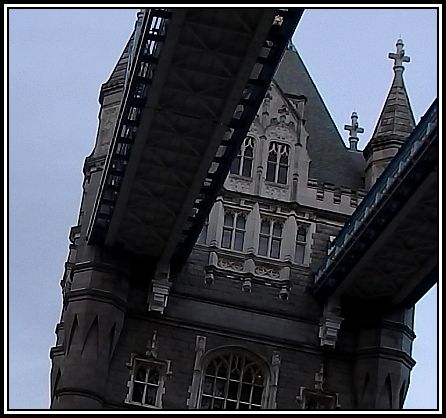 View of the Upper South Face of the North Tower and of the Upper Walkway
View of the Upper South Face of the North Tower and of the Upper Walkway
-oOo-
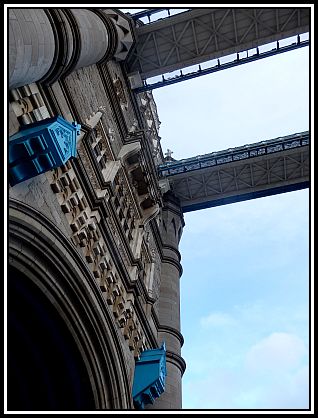 View of the Upper South Face of the North Tower and of the Upper Walkway
View of the Upper South Face of the North Tower and of the Upper Walkway
-oOo-
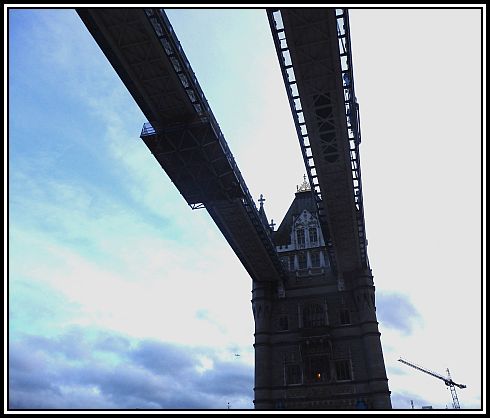 View of the Upper Walkway (note the glass floors now installed) and the North Face of the South Tower
View of the Upper Walkway (note the glass floors now installed) and the North Face of the South Tower
-oOo-
Where The Basicles meet
-oOo-
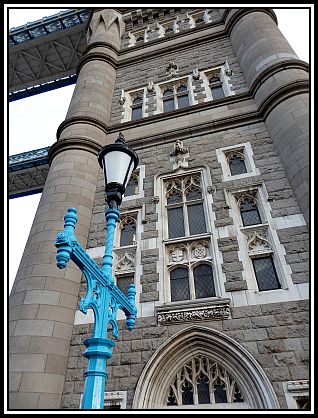 View of the West Face of the North Tower and one of the Street Lamps present on The Bridge
View of the West Face of the North Tower and one of the Street Lamps present on The Bridge
-oOo-
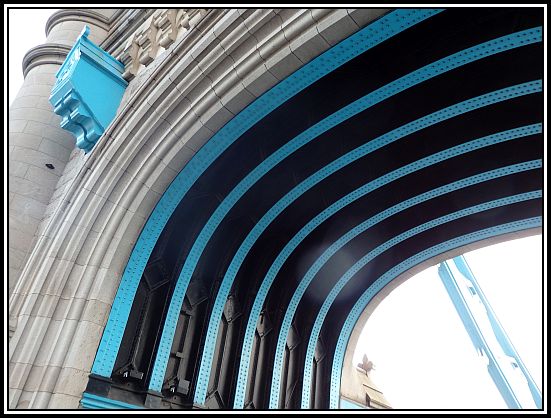 View of the ceiling of the passage through the South Main Tower
View of the ceiling of the passage through the South Main Tower
-oOo-
View seen walking towards the South Abutment Tower – note again, the huge blue and white steel Anchor Girders
-oOo-
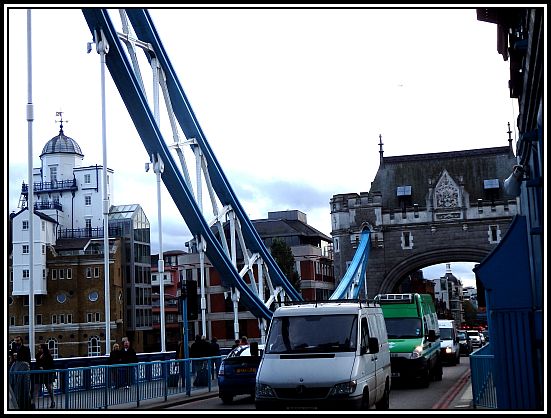 A closer view of the South Abutment Tower
A closer view of the South Abutment Tower
-oOo-
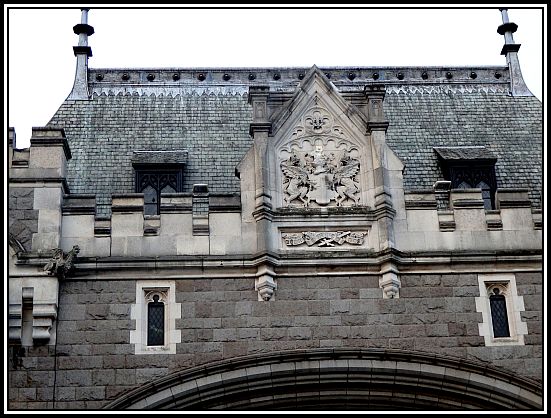 Detail of the South Abutment Tower
Detail of the South Abutment Tower
-oOo-
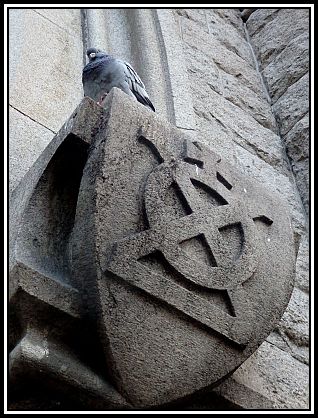 Pigeon finding a place to rest on the South Abutment Tower
Pigeon finding a place to rest on the South Abutment Tower
-oOo-
VIEWS FROM THE BRIDGE
 Panoramic view of the North Bank of The Inner Area of The Pool of London
Panoramic view of the North Bank of The Inner Area of The Pool of London
-oOo-
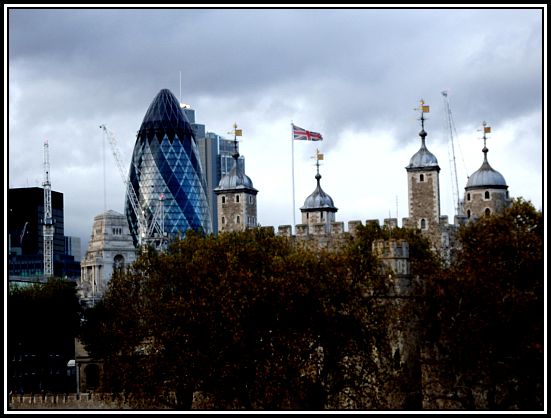 The White Tower, The Gherkin (Headquarters of the Swiss Reinsurance Company Limited) & 10 Trinity Square
The White Tower, The Gherkin (Headquarters of the Swiss Reinsurance Company Limited) & 10 Trinity Square
-oOo-
-oOo-
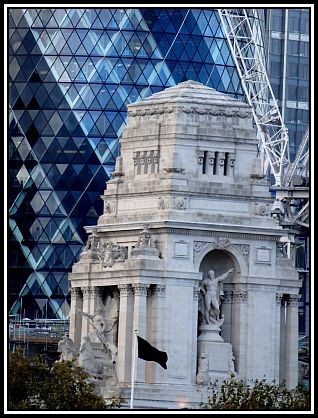 Former Headquarters of The Port of London Authority at 10 Trinity Square; the inaugural meeting of the General Assembly of the United Nations was held here in 1946
Former Headquarters of The Port of London Authority at 10 Trinity Square; the inaugural meeting of the General Assembly of the United Nations was held here in 1946
-oOo-
I have to admit that although Tower Bridge was still Tower Bridge, the surrounding area was very different. Although it was not clean and tidy, I missed The Docks with the barges, cranes and the variety of ships that once docked there.
The face lift given to The Bridge in recent years proved to be of value since it now looked smarter than in previous years. Today The Bridge has become even more of a tourist attraction since much of it is now open to the public for inspection. In addition, the upper cross walk has been reopened to the public, and recently, glass floors have been added for those with courage enough to walk on them.
The traffic on The Bridge is as busy as before and still noisily rumbles across causing The Bascules to judder as they used to. However straddling them, I have to admit, did not prove to be as frightening as it once was.
(Photograph is attributed to equinoxe)
——oooOOOooo——
ACKNOWLEDGEMENTS
I would like to thank Mr. Dave Hill for allowing the postcards of Tower Bridge to appear here.
I would like to thank the people whose photographs are reproduced here.
——oooOOOooo——
——oooOOOooo——
——oooOOOooo——
Click here to GO to the POPPIES AT THE TOWER – PAGE 4
——oooOOOooo——
Click here to GO to the POPPIES AT THE TOWER – PAGE 3
——oooOOOooo——
Click here to GO to the POPPIES AT THE TOWER – PAGE 2
——oooOOOooo——
Click here to GO to the POPPIES AT THE TOWER – INTRODUCTION
——oooOOOooo——
Click here to RETURN to the TABLE OF CONTENTS
——oooOOOooo——

